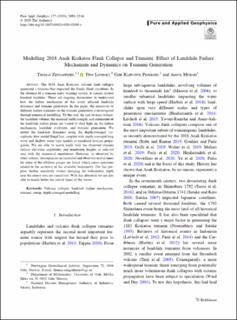Modelling 2018 Anak Krakatoa Flank Collapse and Tsunami: Effect of Landslide Failure Mechanism and Dynamics on Tsunami Generation
Peer reviewed, Journal article
Published version
Permanent lenke
https://hdl.handle.net/11250/2756118Utgivelsesdato
2020Metadata
Vis full innførselSamlinger
- NGI articles [1037]
Originalversjon
Pure and Applied Geophysics (PAGEOPH). 2020, 177 2493-2516. 10.1007/s00024-020-02489-xSammendrag
The 2018 Anak Krakatoa volcano flank collapse generated a tsunami that impacted the Sunda Strait coastlines. In the absence of a tsunami early warning system, it caused several hundred fatalities. There are ongoing discussions to understand how the failure mechanism of this event affected landslide dynamics and tsunami generation. In this paper, the sensitivity to different failure scenarios on the tsunami generation is investigated through numerical modelling. To this end, the rate of mass release, the landslide volume, the material yield strength, and orientation of the landslide failure plane are varied to shed light on the failure mechanism, landslide evolution, and tsunami generation. We model the landslide dynamics using the depth-averaged viscoplastic flow model BingClaw, coupled with depth-averaged long wave and shallow water type models to simulated tsunami propagation. We are able to match fairly well the observed tsunami surface elevation amplitudes and inundation heights in selected area with the numerical simulations. However, as observed by other authors, discrepancies in simulated and observed arrival times for some of the offshore gauges are found, which raises questions related to the accuracy of the available bathymetry. For this purpose, further sensitivity studies changing the bathymetric depth near the source area are carried out. With this alteration we are also able to match better the arrival times of the waves.
